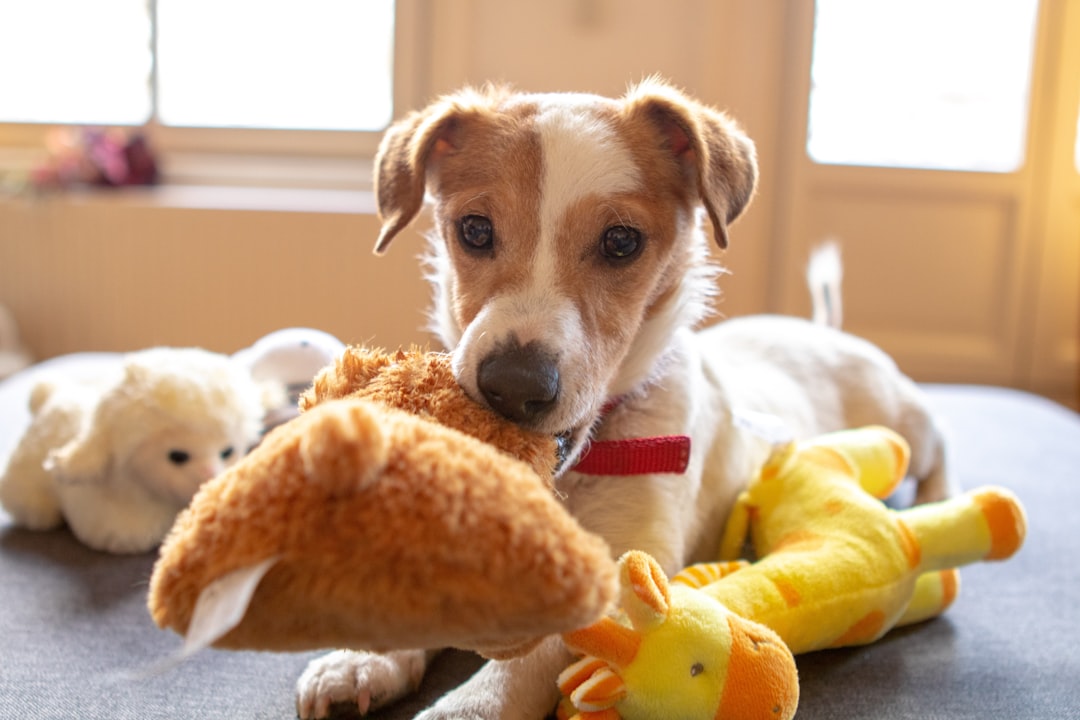Pawsitive Resolutions: A Guide to Setting Achievable New Years Goals for Your Dog
This article provides a guide to setting achievable New Years resolutions for your dog, including tips for maintaining their health and fitness, addressing behavioral issues, and sticking to their resolutions.
Setting Realistic Goals for Your Dog
When it comes to setting New Year’s resolutions for your furry friend, it’s essential to take into account their unique personality, habits, and capabilities. Dogs are creatures of habit and thrive on routine, so the key to successful resolutions lies in aligning their goals with their natural inclinations. For example, if your dog loves to be active and social, a realistic resolution could involve regular visits to the dog park or setting up playdates with other canine companions. This not only contributes to their physical fitness but also fulfills their need for social interaction and mental stimulation.
In addition to physical activity, mental well-being plays a crucial role in your dog’s overall happiness and health. Therefore, setting achievable resolutions that focus on mental enrichment is equally important. For instance, incorporating puzzle toys, interactive feeding games, and obedience training can help keep your dog’s mind sharp and engaged. These activities not only provide mental stimulation but also strengthen the bond between you and your pet, making the resolution journey a rewarding experience for both of you.
Health and Fitness Resolutions for Your Dog
Ensuring your dog’s health and fitness should be a top priority for the new year. Regular veterinary check-ups play a crucial role in monitoring your dog’s overall well-being, identifying any potential health issues, and ensuring they receive timely vaccinations and preventive care. By scheduling routine dental check-ups, you can help maintain your dog’s oral health and prevent dental problems, such as tartar buildup and gum disease, which can impact their overall health.
Furthermore, providing a well-balanced diet tailored to your dog’s specific needs is essential for their overall health and weight management. For example, if your dog is a senior or has specific dietary requirements, you may need to adjust their food to accommodate these needs. This might involve consulting with a veterinarian or a canine nutritionist to create a diet plan that aligns with your dog’s age, breed, and activity level, ensuring they receive the necessary nutrients to support their health and well-being. Additionally, incorporating daily exercise into your dog’s routine, such as walks, outdoor playtime, and interactive games, can contribute to their physical fitness, mental stimulation, and overall happiness.
By focusing on these health and fitness resolutions, you can set your dog up for a healthy and vibrant year ahead, full of tail-wagging adventures and cherished moments together.
Training and Behavior Resolutions for Your Dog
When setting training and behavior resolutions for your dog, it’s essential to address common behavioral issues with a positive and patient approach. For instance, if your dog tends to engage in nuisance barking, you can work on teaching them the “quiet” command by rewarding them for staying calm when the doorbell rings or when they encounter other dogs during walks. By consistently using positive reinforcement and redirecting their behavior with engaging toys and activities, you can help your dog overcome this issue while strengthening your bond with them.
Another example of a behavior resolution involves addressing chewing habits. Instead of scolding your dog for chewing on furniture, consider providing them with a variety of stimulating chew toys and bones. By redirecting their chewing behavior to these appropriate items and positively reinforcing their use, you can encourage your dog to develop healthier chewing habits and minimize damage to your home. Consistency and patience are key as you guide your dog towards this resolution, ensuring that they feel supported and motivated to make positive changes.
Moreover, training techniques such as clicker training and reward-based methods can be incredibly effective in addressing behavior resolutions. For instance, if your dog has a tendency to dig in the yard, you can use a clicker to mark and reward moments when they refrain from digging, gradually shifting their focus to alternative activities like playing with a digging box or interactive toys. By incorporating these positive training methods into your dog’s resolution journey, you can create a fun and engaging learning experience that promotes good behavior and a harmonious relationship between you and your pet.
Tips for Sticking to Your Dog’s Resolutions
Sticking to your dog’s resolutions can be a fun and rewarding journey for both you and your furry friend. One effective way to support your dog in achieving their goals is by incorporating their resolutions into your daily routine. For example, if your dog’s resolution is to get more exercise, make it a point to schedule regular walks or playtime sessions into your daily schedule. This not only helps in reinforcing positive behaviors but also strengthens the bond between you and your pet as you both engage in these activities together, [2].
Consistency is key when it comes to sticking to your dog’s resolutions. By providing clear boundaries and consistent reinforcement, you can help your dog understand what is expected of them. For instance, if your dog’s resolution is to stop begging for food, it’s important to establish a consistent rule of not giving in to their begging behavior. Instead, you can redirect their attention by teaching them to go to their designated place during meal times. This consistent approach will help your dog understand the expected behavior and encourage them to stick to their resolution, [4].
Understanding your dog’s unique communication cues and body language is essential in creating a supportive environment for their resolution journey. By paying attention to their signals, you can effectively gauge their progress and make adjustments as needed. For instance, if your dog exhibits signs of stress or discomfort while trying to achieve a particular resolution, it may be necessary to modify the approach or seek professional guidance. This attentiveness to your dog’s needs fosters a harmonious and stress-free environment, allowing them to thrive as they work towards their goals, [4].
Light-Hearted Dog New Year’s Resolutions
Setting light-hearted New Year’s resolutions for your dog can add a delightful and amusing touch to the process. It’s an opportunity to embrace your dog’s unique personality and funny quirks in a light-hearted and endearing manner. For instance, you might consider resolutions like trying to make it to the toilet if sick at night, being less afraid of loud noises, or not bothering you when you’re busy working. These resolutions not only bring a smile to your face but also provide a fun way to address certain behaviors and habits in a light-hearted manner.
Infusing your dog’s resolutions with humor and warmth can further solidify the special bond between you and your pet. Sharing amusing and relatable resolutions from reputable sources can also add a touch of laughter and joy to the pet owner’s perspective, [2],, [4]. It’s a chance to step back and appreciate the delightful and sometimes quirky nature of our furry companions while still addressing their behaviors in a positive and affectionate way.
Reflecting on Resolutions
When you take the time to set resolutions for your dog, it’s important to reflect on how they can positively impact your pet’s well-being. Consider how your dog’s resolutions align with their natural behaviors and instincts, ensuring that the goals are respectful and compassionate towards your furry friend. For example, if you’ve set a resolution to provide mental enrichment through interactive play and obedience training, reflect on how these activities can contribute to your dog’s overall happiness and fulfillment [4].
Moreover, reflecting on your dog’s resolutions also involves acknowledging your significant role as a pet owner in supporting and nurturing their journey towards achieving these goals. This reflective process can foster a deeper understanding of your pet’s needs and behaviors, strengthening the bond and mutual understanding between you and your dog. For instance, if you’ve resolved to address your dog’s nuisance barking through positive reinforcement training, reflect on how your consistent reinforcement and patience can positively impact your dog’s behavior and your relationship with them.



